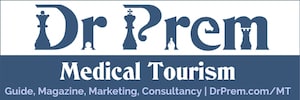Definition:
The lung cancer is a diseased conditioned in which the malignantcancerous cells are formed in the lung tissues. The primary cause of lung cancer is smoking. The lung cancer is divided into Small- cell lung cancer (SCLC) and Non-small –cell lung (NSCLC) cancer.
The treatment of the lung cancer involves surgery, chemotherapy, radiation therapy or combination of all three treatments. The treatment option is decided by the health care provider. On the base of location and extent of the tumor with considering the health status of patient
About 10 to 35% of lung cancers can be removed surgically and on the base of size and location the surgical procedure is selected to remove tumor of the lung. The different types of lung surgery are
- Wedge resection(segmentectomy)
- Lobectomy
- Pheumonectomy
- Lobectomy
Lobectomy is a surgical procedure performed to remove a lobe of lung to treat early stage NSCLC type of lung cancer, which has not spread beyond the lung.
Why it needed?
The lobectomy is advised to treat a lung cancer in patients having symptoms like
- Continues cough
- Shortness of breath
- Discomfort in chest
- Wheezing
- Streaks of blood in sputum
- Hoarseness
- Shoulder pain
- Loss of appetite and tired feeling
- Weight loss without known reason
Certain lung cancers are asymptomatic and are found during a routine x-ray chest
Risk factors associated with lung cancer includes
- Smoking –cigarette, pipe or cigar smoking is a single significant risk factor for the development of lung cancer
- Exposure to second –hand smoke( passive smoking), randon, arsenic, asbestos, chromates, nickel etc and air pollution
- Familial predisposition
- History of radiation therapy to the breast or chest
- Presence of lung disease like chronic obstructive lung disease/
Facts and figures
- The risk for lung cancer is on average 10 fold higher in smokers, compare to in lifetime nonsmokers
- The lung cancer is the most common cause of the cancer related death both in men and women in whole world.
- In the United States, the estimated new cases of lung cancer in 2009 is about 219,440 and deaths from lung cancer is about 159,390.(American cancer society )
- In most cases of lung cancer the cancer tumor develops in the right lung as it contains the majority (55%) of lung tissue.
- Lung cancer is most common in the elderly; almost 70% of people diagnosed with lung cancer are over the age of 65 years.
- The cases of lung cancer are increased rapidly after the 1930, following increased tobacco smoking
Advantages
- The lobectomy surgery can cured the Stage I and II cancer in more than 50% of cases
- In certain cases of advance stage lung cancer surgery extends and improves the quality of life of patient
Disadvantages
- Limited activity and ongoing chest pain for long time
- In some cases the left lung can not compensate for the loss of the lobe can lead to respiratory insufficiency
- In some cases patient may not survive the surgery due to lung failure
Risk and complications associated with lobectomy surgery includes
- Anesthesia or medicinal reaction
- Bleeding
- Infection
- Bronchopleural fistulae/ air leakage
- Cardiac arrhythmias
- Pulmonary embolism
- Damage to adjacent organs like heart and blood vessels
Preoperative preparation
- Complete physical examination
- Blood and urinalysis
- Diagnostic tests including x-ray , CT scan, MRI of chest
- Sputum testSputum test
- Bone scan
- ThoracentesisThoracentesis
- Biopsy
- Visit to a doctor and have knowledge about the risk, post surgical rehabilitation and possible outcome of the surgery
- Consultation with surgeon or doctor a week ago, and have a list of medicine which is to be taken or needed to be stopped.
- Arrangement for leave from work, help at home, helps with driving and during post surgery recovery and rehabilitation program.
- Have a easy to wear clothes
- Medical tourist are advised to select a comfortable and handicap accessible hotel room, for recovery after getting discharge from hospital
- Arrangement for blood donation, if required during surgery
- Arrangement at home considering post surgery rehabilitation
- Do not eat or drink anything after midnight the night before surgery
Post operative care
- Generally after the operation, patient may need to stay in hospital for about 5-7 days. The drain will be attached to the site of operation and patient will be shifted to ICU, where the vital signs will be constantly monitored.
- A breathing tube may be put to assist proper breathing which will be removed when patient becomes stable and can breathe his own. The drain tubes will be removed within 3-4 days post surgery as the drains stops. The medication will be given to prevent infection and reduce the discomfort and pain.
- Patient will be encouraged to get mobile as soon as possible after the surgery. A physiotherapist will teach breathing exercises needed to be done to prevent infection and complication. X-rays of the chest will be taken regularly to check the proper functioning of the lung and abnormalities
Dos, Don’ts and Precautions to be taken after the lobectomy surgery includes
- Do the breathing exercises regularly
- Keep incision area dry and clean
- Take proper rest
- Do not lift heavy weight or perform any strenuous activity
- Inform doctors immediately if experience shortness of breath or other abnormal signs
- Be regular about follow –up visits to health care provider
Patient can expect full recovery from the surgery within 1-3 months post to surgery. Many patients need to start radiotherapy or chemotherapy as soon as possible after the lobectomy.
The other treatment for lung cancer includes
2. Chemotherapy
Medicines or drugs are given to kill cancer cells and stop new formation of it.
- Only chemotherapy is given when cancer has spread to stage IV
- In some cases it is given before surgery or radiation to increase the effectiveness of those treatments
- It is started after the surgery in some cases to remove or kill any remaining microscopic cancerous tissue or cell
3. Radiation therapy
Powerful x-rays or other forms of radiations are used to kill cancer cells.
- It can be combined with chemotherapy
The treatments which are mostly used to relieve symptoms caused by NSCLC includes
- Laser therapy – a small beam of light is used to burn and kill cancer cells
- Photodynamic therapy- a special form of light is used to activate a drug in the body that kills cancer cells.






